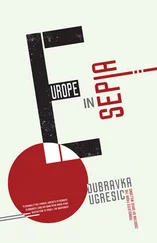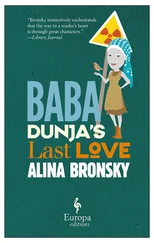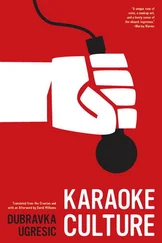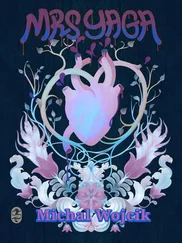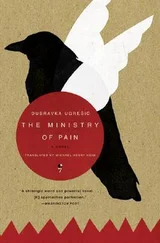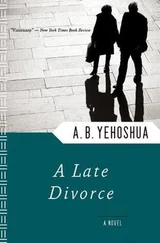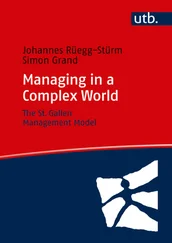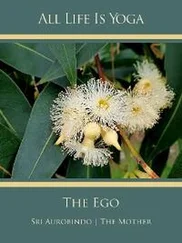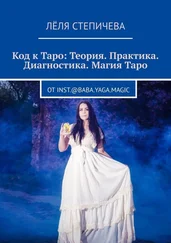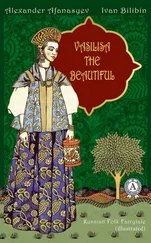Remarks
The hut, vagina dentata , is a male castration fantasy. Your author’s text proposes a remarkable inversion by means of the character of Kukla. Kukla is a victim of her own vagina dentata . The inci dent that occurred at the outset of her sexual life decides her entire later life. Kukla’s problem is two-fold: her sexuality and her creativity are both petrified. She is like the Medusa, who was not made to look in the mirror by others; she did it by herself. She has no children, and only begins to write when her husband dies. And she does so, naturally, hidden behind his name.
Only when Pupa leaves home, her ‘hut’, can she die. Leaving home is the emancipatory deed that leads Pupa where she wants to go – to death.
Returning home, your author returns to the maternal ‘hut’ and repeats the initiation rite for the nth time. She must respect the law of Baba Yaga’s hut, otherwise Baba Yaga will eat her up. The quip about good girls going to heaven while bad girls go everywhere contains the whole female history (as seen by men), where women’s fate has been determined by two opposed poles: home (cleanliness, order, security, family) and the space outside the home (dirt, disorder, danger, chaos, loneliness). The outer space was traditionally reserved to men, and inner space, the home, to women.
Finally, something interesting which can be read as a metaphor realised by contemporary society. The vagina dentata has fled from the field of sexual fantasy into reality. A female condom, the ‘Rapex’, has been invented by a South African woman, who wants to help African women defend themselves against rapists. Just like the Terrible Mother of native North American myths, the female condom has fish teeth in it that can wound the penetrating penis. Apparently the inventor was inspired by meeting a rape victim who said: ‘If only I had teeth down there.’
The mortar, a common object in everyday peasant life, plays a strongly symbolic role in European and Asian mythologies. It symbolises the womb, while its partner the pestle is – what else? – the penis. In Belarus, for example, there is a funny explanation, meant for children, of how children come into the world: ‘I fell from the sky, and landed in a mortar, I climbed out of the mortar and look! How big I’ve grown!’
Slavs used to involve a mortar in comical wedding customs. They would fill the mortar with water, and the bride-to-be had to pummel away with the pestle until all the water was gone. There was a wedding ritual of dressing up the mortar as a female and the pestle as a male, and then this symbolic bride and groom were placed on the wedding table.
The Russians and Ukrainians used the mortar in healing rituals. It was believed that sickness could be beaten away in a mortar, sick animals could be beaten back to health with a pestle and mortar and even a fever could be beaten to death in a mortar. [29] In India and South Africa today, men infected with Aids sometimes believe that intercourse with a virgin will cure them. There are specialised brothels where girls aged five to ten are bought from their parents and made available for ‘medicinal purposes’. The girls almost always catch Aids themselves.
* * *
The Indian Vedas, too, celebrate the mortar and soma (the drink of the gods, like nectar, though it is quite possibly really sperm), but here the sexual symbolism is raised to a cosmic level. For the mortar is a cosmic womb in which life itself is renewed, while the pestle is a cosmic phallus.
An iron mortar is mentioned in a Russian spell from the 17th century: ‘There is an iron mortar, on that iron mortar stands an iron stool, on that iron stool sits an iron woman.’ ( Stoit stupa zheleznaja, na toj stupe zheleznoj stoit stul zheleznyj, na tom stule zheleznom sidit baba zheleznaja …)
A mortar is Baba Yaga’s means of transport, and in the mythical world she has exclusive permission to fly in it. ‘Ordinary’ witches travel by broomstick, flying up the chimney and out of the house. Baba in The Mountain Wreath , by Petar Petrovíc Njegoš, says: ‘We move around with silver oars, our vessel is an eggshell.’ This verse draws on the folk belief that witches ride in eggshells. That is why people would break eggshells into little bits before they threw them away, so that witches could not use them. And on the Croatian island of Krk they believe that witches and sorceresses can only cross the sea in eggshells.
The mortar, Baba Yaga’s transport of choice, [30] ‘Soon a frightful noise is heard from the woods: the trees tremble, the dry leaves rattle; Baba Yaga bursts from the woods, riding in a mortar, waving a pestle, brandishing a broom and rubbing out her traces as she goes.’ (From Vassilissa the Beautiful )
is symbolically closer to an eggshell than a broomstick. Baba Yaga rides in her own symbolic womb (which is so hypertrophied that it can even hold her standing up) and paddles through the air with a pestle-penis. Liberated from human laws that determine what we can and cannot do, the unrelenting laws of the sexes, Baba Yaga makes use of both organs, male and female, and she flies, which is a very strong mythic representation of human sexuality. This sexuality is, it goes without saying, grotesque and carnivalised. As she is an old woman (supposedly a centenarian), Baba Yaga does not only travesty human sexuality: she transvesties it.
Of course, other interpretations are also possible: as a female, Baba Yaga’s ‘wings’ were ‘clipped’ in advance, so she was compelled to ‘fly’ in a mortar, an everyday object, like flying in a stewpot or a kneading-trough. There is also the interpretation that Baba Yaga is actually a hermaphrodite, hence a perfect human being, a Slavic folklore version of Tiresias, who – thanks to the gods – switched gender more than once (and decided in the end that being female is much better!). In Slavic carnival travesties, in Croatia for example, they carry a doll around the village; they call it ‘grandma carries grandpa’ ( baba dida nosi ), and it is formed of woven parts of male and female bodies.
A popular Russian woodcut ( lubok ) from the early 18th century depicts an unusual scene: Baba Yaga going into battle with a crocodile. Supposedly the crocodile is Peter the Great (because that was what the Old Believers called Peter the Great: ‘the crocodile’), and Baba Yaga is his wife. Baba Yaga rides on a swine, holding the reins in one hand and a pestle in the other. Her belt is a tangle of a hatchet and a distaff, one ‘male’ object and the other typically ‘female’, although they both have a phallic shape. Hence Baba Yaga, in the imagination of the anonymous woodcut-artist, possesses both symbols of power.
Remarks
Pupa’s foot warmer is a modern equivalent of Baba Yaga’s mortar. This connection becomes even more obvious when the girl Wawa claims Pupa’s boot and uses it as a mother’s womb in which she falls asleep and dreams her dreams.
Kukla, the vagina dentata , longs for a penis so that she can start up her ‘flying machine’ and become an independent flier. But in order to come by the requisite part, its owner has to die. Perhaps this is why Kukla’s men all die, or are invalids: in other words, Kukla does not need a complete man, she only needs a bit of him – the ‘pestle’. A current, a faint and gentle breeze, can be felt enveloping Kukla, who would in ancient times have been the mistress of the four winds.
Baba Yaga is dogged by evil rumours that she ‘ate people like chickens’. Her hut or hovel, surrounded by heaps of human bones, plainly signals to the passing traveller that he has stumbled upon a cannibal’s lair.
Читать дальше

